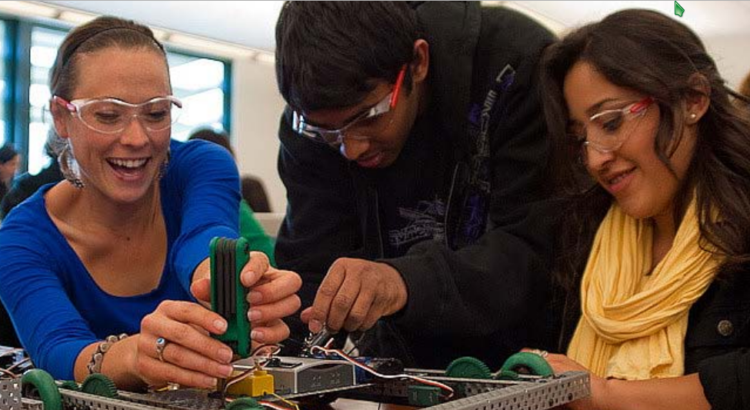América del Norte/Canadá/Junio 2016/Autor: Karen McBride / Fuente: universityworldnews.com
Resumen: En la década pasada, la internacionalización se ha convertido en una estrategia central para la mayoría de las instituciones canadienses, con el apoyo de las políticas y prácticas sólidas.
Over the past 50 years, as the national voice advancing international education on behalf of its 150 member institutions ranging from K-12 to universities, the Canadian Bureau for International Education or CBIE, has encouraged, assisted and closely monitored internationalisation in Canada. We take a look here at what this success entails and at the prospects for Canada’s next 50 years in international education.
Internationalisation by numbers
CBIE’s 2016 membership survey identified the top three internationalisation priorities as:
- International student recruitment (66%);
- Increasing the number of students engaged in education abroad (59%); and
- ‘Internationalisation at Home’, including internationalisation of the curriculum (52%).
In a survey conducted by Universities Canada in 2014, 95% of Canadian universities indicated that internationalisation or global engagement is included as part of strategic planning, with 82% identifying internationalisation as a top five priority.
In addition, 81% offer collaborative academic programmes with international partners. Moreover, Canada has twice the world average of international co-authorship – 43% of Canadian papers are co-authored with one or more international collaborators.
Given the value placed by Canadian institutions on internationalisation – and the centrality to that effort of hosting international students on campus – it comes as no surprise that there are more students from abroad in Canada than ever before.
In 2014, the country hosted 336,000 international students holding study permits (all levels combined: K-12, college, university undergraduate and graduate), an 83% increase since 2008 and an increase of 10% over 2013.
This number does not include short-term students such as exchange or second language students, who do not require a study permit, and therefore significantly underrepresents Canada’s international student population.
Unfortunately, the increase in inbound students to Canada is not mirrored in the outbound student population. Canadian students have traditionally not studied abroad in large numbers and Universities Canada reports that annually fewer than 3.1% of full-time Canadian students at all levels have an education abroad experience.
This is despite reports from Canadian students who have studied abroad on the transformational nature of the experience, its many contributions to their academic and career achievements, and its value in enhancing their communication skills, self-awareness and adaptability.
Institutions are on board: 78% of universities provide funding to support student participation in study abroad programmes and both colleges and universities are finding innovative ways to offer more flexible learning abroad options.
It is not only participating students and their institutions who value the career skills they gained. In a 2015 survey by the Leger polling firm, 82% of employers who hire recruits with international experience reported that these employees enhance their company’s competitiveness.
Two-thirds of hiring managers stated that Canada is in danger of being left behind by the growing economies of China, Brazil and India unless young Canadians learn to think more globally. The economic implications for Canada are significant, given that we are a country heavily dependent on international trade, accounting for 3.3 million jobs. We need to develop our talent to ensure that we are competitive.
Internationalisation for all
Increasingly, internationalisation is a central pillar in the quest for excellence of Canadian educational institutions. Recently, CBIE’s Internationalisation Leaders’ Network released an Internationalisation Statement of Principles for Canadian Educational Institutions designed “to serve as a guidepost in their demanding, fast-paced and complex work”.
It could be said that consensus on the need to reinforce fundamental principles – what we have called ethical internationalisation – is the most important recent trend in internationalisation. The next stems from this, and it is making internationalisation pervasive throughout our educational institutions, including bringing significant reform to curriculum, teaching practices, research and campus life.
In 2015, we saw a greater focus on ‘Internationalisation at Home’ – that is, internationalisation infused in the ethos of the institution and that leads to positive learning outcomes for all students.
Given the vast benefits of internationalisation, and recognising that mobility is not possible for every student, providing an avenue to prepare every student for the global context is imperative. Canada must take a proactive, inclusive approach and make the full spectrum of international education a priority, as other countries have done.
The global engagement challenge
Canada faces the task of getting more of its students outbound for educational experiences in other countries and preparing them to become global citizens in all the ways that the term implies.
Beyond economic imperatives, education institutions play a critical role in developing Canadians who are prepared to participate and lead in the global village, the leaders of tomorrow who can negotiate, analyse, connect and engage in meaningful ways at the international level.
CBIE endorses the recommendation of the government’s Advisory Panel on Canada’s International Education Strategy, seeking 50,000 study abroad awards annually for Canadian students.
With its emphasis on youth engagement in international cooperation activities, and Prime Minister Justin Trudeau’s personal interest (he is in fact also minister of youth), CBIE is urging the new government to establish a signature programme in time for Canada’s 150th anniversary in 2017. We are also urging the private sector to step up to the challenge and pledge its support to such an effort.
What about the next 50 years?
As we move forward in making international education achievable for all students, we will need to expand the conversation to answer these important questions:
How do we increase the scale and scope of international experiences for students, thereby ensuring that they have the knowledge, skills and competencies they need in a globalised world?
How do we enlist the support of the professoriate broadly, in order to ensure that all students benefit from global perspectives in their studies?
How do we ensure that both government and the private sector are seized with the issue?
And how do we raise public awareness of the long-term benefits of global engagement and the richness that stems from our interdependence?
While celebrating past successes, there is much work yet to do.
Fuente de la noticia: http://www.universityworldnews.com/article.php?story=20160607135127850
Fuente de la imagen: https://www.google.com/search?q=Canadian+Bureau+for+International+Education&client=ubuntu&hs=y3q&channel=fs&source=lnms&tbm=isch&sa=X&ved=0ahUKEwixuvmc3aDNAhXH2R4KHUDOBYUQ_AUICigD&biw=1301&bih=673













 Users Today : 3
Users Today : 3 Total Users : 35419643
Total Users : 35419643 Views Today : 4
Views Today : 4 Total views : 3353865
Total views : 3353865